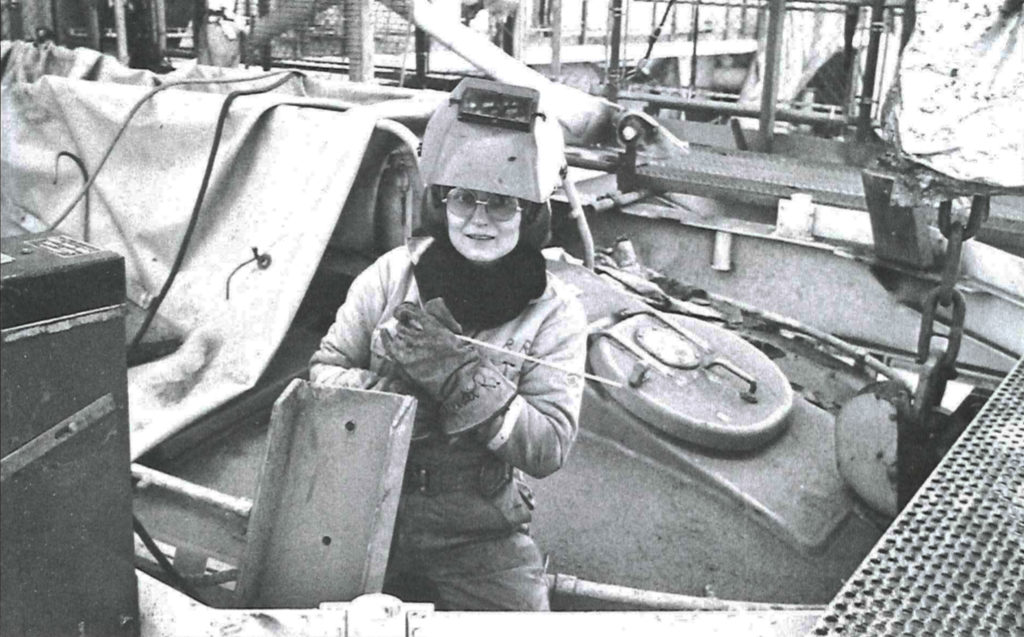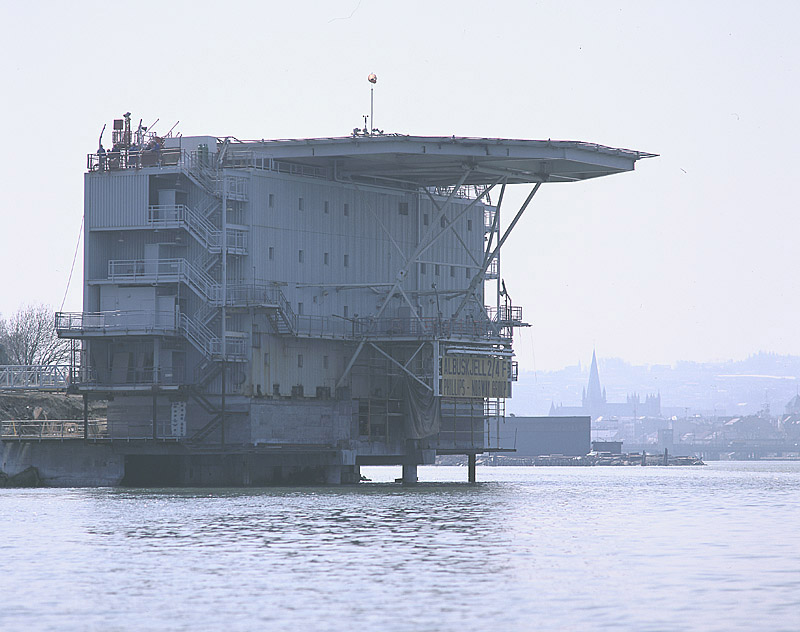Albuskjell 2/4 F comes on stream

Producing from 11 wells, the platform’s process facilities included a three-phase separator (12.2 x 2.9 metres) for gas, oil and water and a test separator (4.7 x 1.7 metres).
In addition came a glycol gas dehydrator (11.5 x 3.2 metres) with glycol recovery, a filter for produced condensate and a fiscal metering station for oil and gas.
 første kvinnelige sveiser, forsidebilde, 1984, historie,
første kvinnelige sveiser, forsidebilde, 1984, historie,Production from 2/4 F was blended with the respective streams from Albuskjell 1/6 A for onward export to 2/4 R via oil and gas pipelines with diameters of 18 and 24 inches respectively. Installed in 1977, 2/4 F came on stream in July 1979. Its accommodation was replaced and expanded to 96 beds in 1983. Production ceased in 1990, with derrick and drilling modules removed in 1997.
Here are 500 photos from Albuskjell at Digitalt museum
 Livingquarter from “Albuskjell 2/4 F” at “Det maritime skolesenter i Trondheim”.
Livingquarter from “Albuskjell 2/4 F” at “Det maritime skolesenter i Trondheim”.Tor 2/4 E comes on streamNew hotel platform on line
